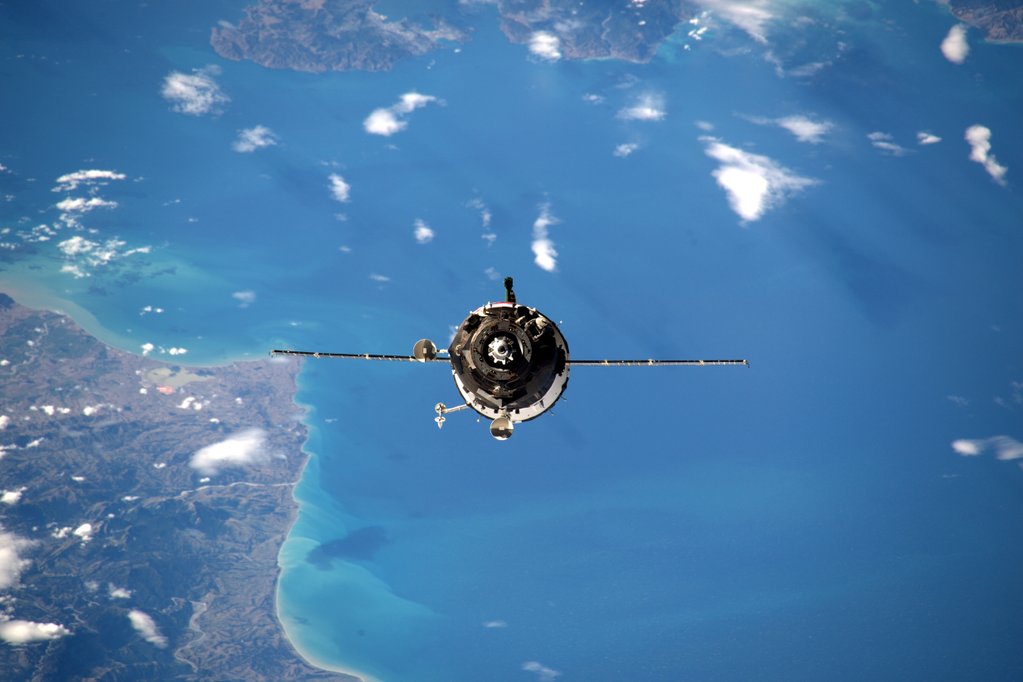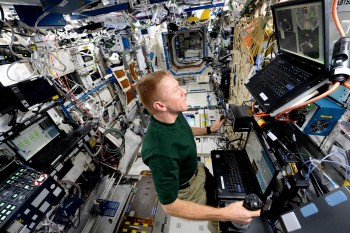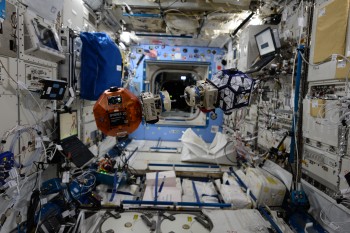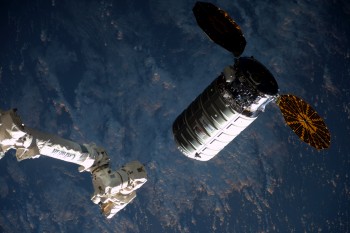We continue our general overview of ESA astronaut Tim Peake’s operations on the International Space Station. Continuing where we left off with the arrival of NASA astronaut Jeff Williams and cosmonauts Oleg Skripochka and Alexey Ovchinin of Roscosmos who entered the Space Station in the night of Friday to Saturday 18 March.
Tim Peake helped clean the Station as is usual for a Saturday and all six astronauts had a safety briefing at 6:30 local time on the Space Station that runs on Greenwich Mean Time. The astronauts had their “midday meal” at 5:30 – the crew shifted their regular hours to accommodate the nighttime arrivals. Before calling it a day Tim prepared an experiment rack in the Destiny laboratory for the Strata-1 experiment that is seeking to find out more about how regolith behaves in weightlessness – the soil found on asteroids, comets and our Moon.
After a restful Sunday Tim started his week on Monday 21 March by collecting samples for the Japanese Multi-Omics experiment that is looking at how astronaut’s microbiomes change in space – the microscopic organisms such as bacteria and fungi that live on and inside all human-beings. This day’s session involved a faecal sample and storage in the Station’s freezer. Afterwards Tim removed and replaced a part in the Destiny laboratory’s combustion experiment rack to prepare for the Flame Extinguishment -2 experiment. In the afternoon Tim worked on the Habitability experiment, spent 90 minutes installing radiation dosimeters around the Station and finished the day with a 2-hour practice run on berthing a Cygnus spacecraft together with commander Tim Kopra. On Saturday another spacecraft was to arrive with fresh supplies and the two Tims were tasked with grabbing and berthing the 4-tonne spacecraft with the 16-m Canadarm.
Tuesday saw Tim work on many smaller items such as another sample session for Multi-Omics, working on the Station’s warm water supply, checking sensors needed for the Cygnus arrival, a session for Habitability, tracking his radiation dosage, a standard private medical conference with his flight surgeon and charging batteries and preparing for the SPHERES droids docking test. Before lunch Tim joined Tim Kopra and Jeffrey Williams for a live public relations call with Earth. After lunch all astronauts had a general emergency instruction review followed by an inspection of emergency supplies for Tim Peake. The rest of the day was spent exercising and taking care of the SPHERES batteries.
With the batteries ready Wednesday 23 March saw Tim spend most of his time running the SPHERES docking experiment. SPHERES are volleyball-sized droids that can move independently inside the Space Station by expelling compressed gas. They are used for all types of experiments as well as the only international educational tournament set in space. On Wednesday they were used to test and demonstrate advanced docking techniques – the droids were used to simulate spacecraft flying in space.
Thursday morning started with another Multi-Omics sample collection; this time saliva was requested and stored in the freezer. A Habitability session, a run on the Station’s treadmill to keep fit while in space and a conference call with ESA ground control kept Tim occupied. Before lunch Tim Kopra, Jeff Williams and Tim had a short public-affairs live call. After lunch the Tims had a another 2-hour practice session for berthing Cygnus.
On Friday Tim transferred some files for Astro Pi and started to prepare for the arrival of the supplies on Cygnus including a special conference with ground control. Tim also filled in his weekly Space Headaches questionnaire and did a Habitability session.
Usually the weekends are kept clear of work aside from cleaning the Station and the usual exercise. This weekend – like the previous one – would see a spacecraft arrive so the astronauts had to keep working. The day started at 08:00 as Tim and Tim monitored the approach of Cygnus and captured it at 10:51 GMT. After berthing it to the Station the crew spent over 12 hours moving cargo that needed to be unloaded quickly and freed the cargo ship access corridor working over Sunday as well.
To compensate both Tims were off duty on Monday 28 March – aside from the mandatory 2-hour daily exercise regime.






Discussion: no comments